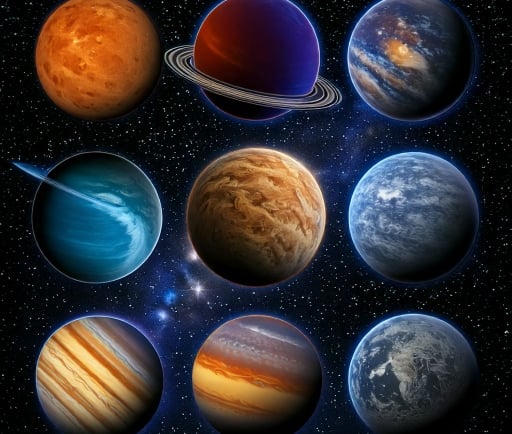The Emerging Exoplanets: From Gas Giants to Terrestrials


Introduction to Exoplanets
Exoplanets, or extrasolar planets, are celestial bodies that orbit stars outside our solar system. They exhibit a remarkable range of physical characteristics and environmental conditions. Among these celestial giants, we can categorize exoplanets into four main types: gas giants, super-Earths, Neptunian planets, and terrestrial planets. Each category plays a vital role in our understanding of planetary formation and the potential for life beyond Earth.
The Fascinating World of Gas Giants
Gas giants, such as Jupiter and Saturn in our solar system, are primarily composed of hydrogen and helium. These massive planets are characterized by their thick atmospheres and lack a solid surface. In the realm of exoplanets, numerous gas giants have been discovered orbiting stars of various sizes and types. They often reside in the so-called 'hot Jupiter' category, which refers to those gas giants that have close orbits to their parent stars, resulting in high surface temperatures. Observations of these distant worlds provide critical insights into atmospheric dynamics and the potential for different climatic phenomena.
Super-Earths and Their Unique Properties
Super-Earths are another intriguing category of exoplanets that have garnered significant interest from astronomers. Defined as planets with a mass larger than Earth's but smaller than that of gas giants, super-Earths can have a diverse range of compositions, including rocky surfaces and thick atmospheres. Many super-Earths exist in the habitable zone of their stars, raising the tantalizing possibility of life-supporting conditions. The study of these planets is essential as it enhances our understanding of planet formation and the potential for habitability in other solar systems.
Neptunian Planets and Terrestrials: A Closer Look
Neptunian planets, resembling Neptune in our solar system, often consist of ice and gases. They can be classified based on their distance from their parent stars, influencing atmospheric composition and climate. On the other hand, terrestrial planets, like Earth, are primarily rocky and share a closer semblance to our own planet. Their surfaces and geological activity provide critical clues about the possibility of life elsewhere. Future missions and telescopes aim to explore these diverse planetary types, potentially uncovering more about their unique environments.
Conclusion: The Ongoing Search for Exoplanets
The exploration of exoplanets has opened up a new frontier in astronomy. With each discovery of gas giants, super-Earths, Neptunian planets, and terrestrial bodies, we inch closer to understanding not just the nature of these distant worlds, but also the origins of our own solar system. As technology advances, the quest to identify and study exoplanets continues, shedding light on the possibilities of life among the stars. The journey into the cosmos promises to unveil many secrets, significantly enriching our knowledge of the universe.
